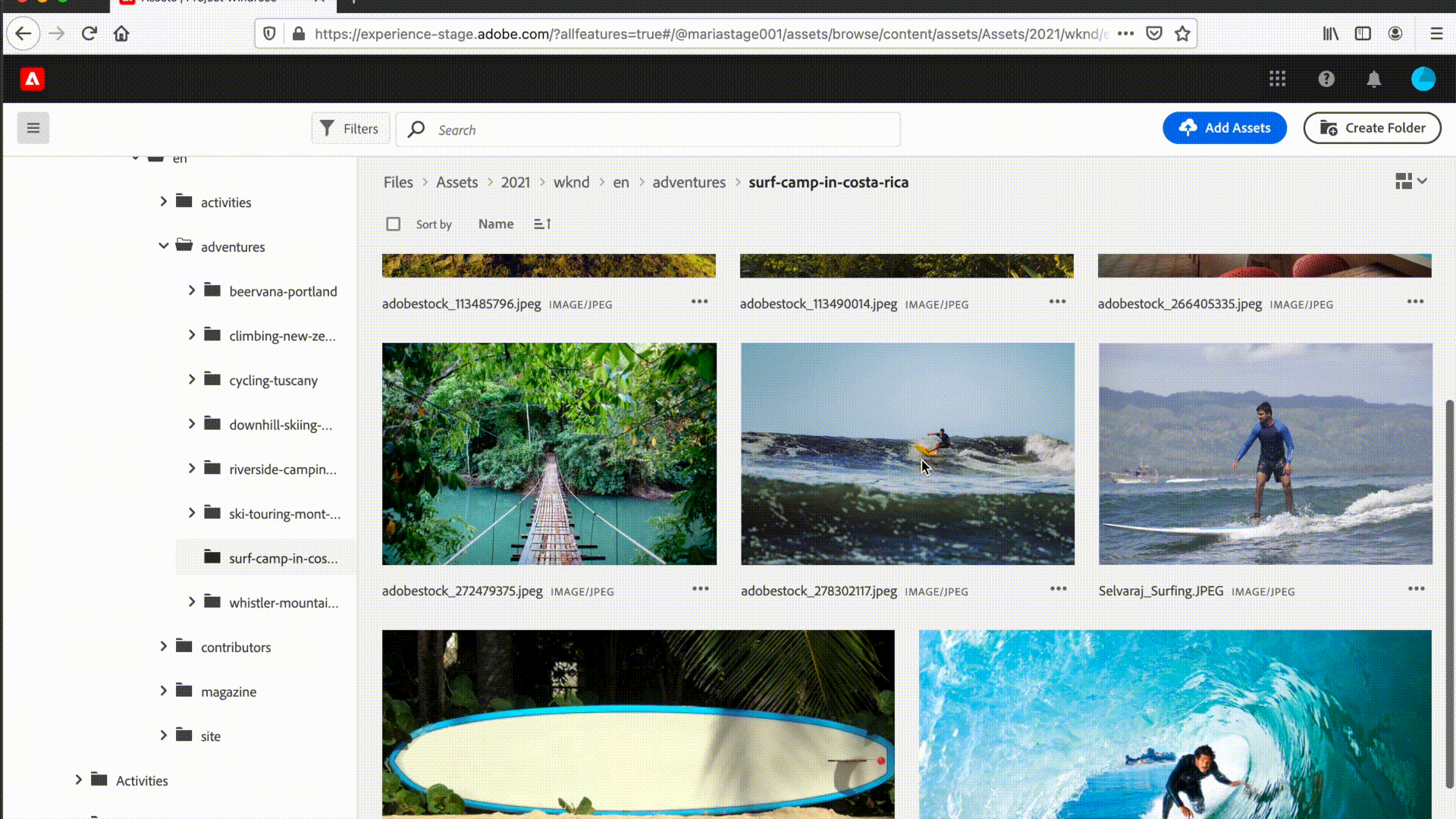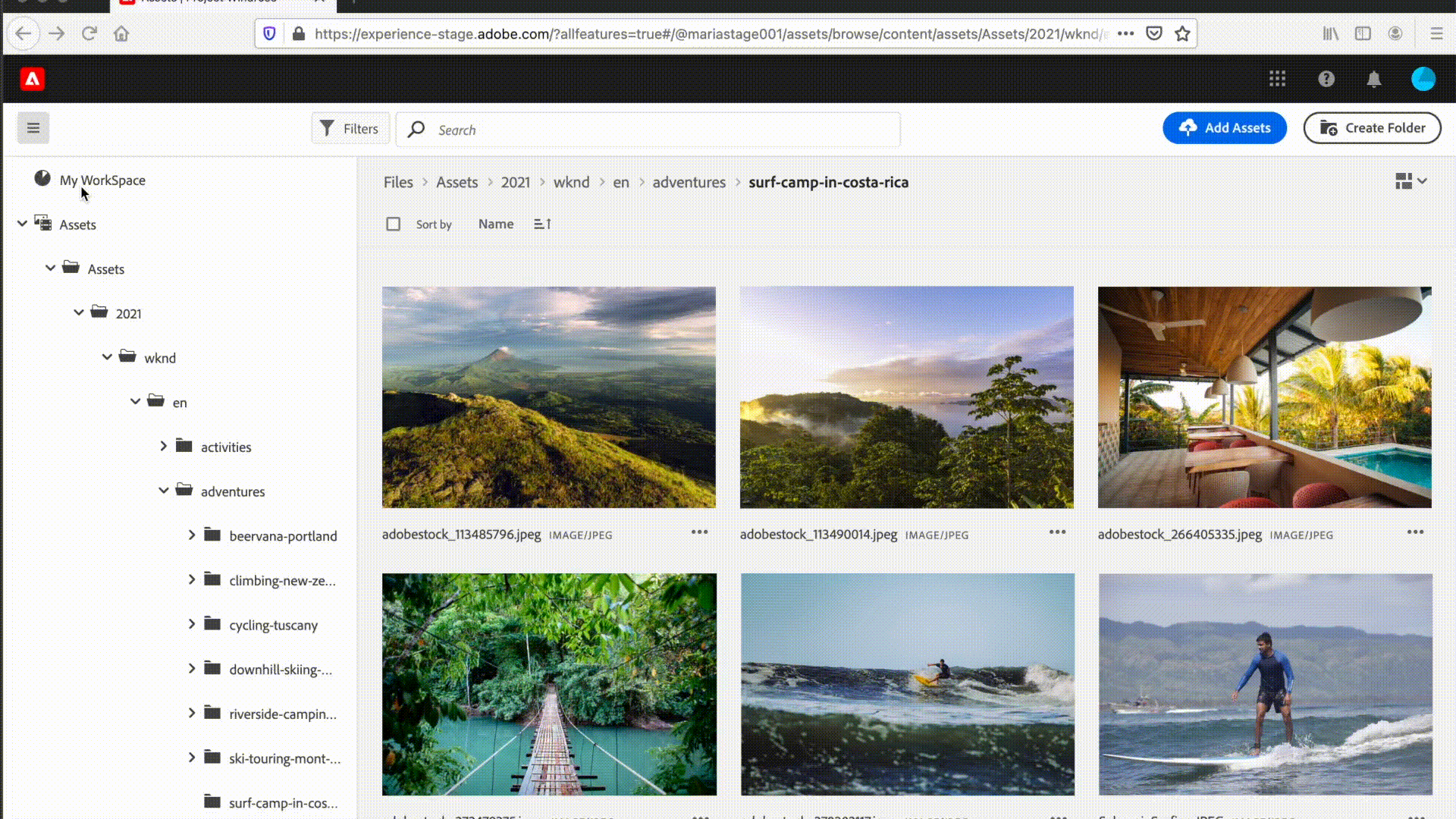Adobe today announced the launch of a new asset management tool, Adobe Experience Manager Assets Essentials. That’s a mouthful, but while the company didn’t necessarily simplify the name, the idea here is to give teams that work with lots of digital assets an easier-to-use management experience in the Adobe Experience Cloud than Adobe’s current enterprise-centric asset management tool can offer.
In addition, Adobe is also launching the first tool to integrate this new experience: the Adobe Journey Optimizer. This new tool is meant to help users leverage their customer data to build out customer journeys and figure out the best ways to deliver messages and content along that journey.
“The push towards digital content and building these richer, engaging experiences — customers expect it,” Elliot Sedegah, director of Strategy and Product Marketing, Adobe, told me. “Almost every interaction that you go along, you expect a rich experience. And not only at that point of just having richer material, like images or video, etc., but you expect it at every point of interaction with that customer. So that customer, if you think of it, isn’t just interacting with a brand, but our customers, they think of it as a customer journey. So using the same content, from awareness to conversion to post-sale and loyalty — they expect that same story to maintain. And it’s getting increasingly hard to get to all the different touchpoints.”
Like with similar products, the idea here is to create a centralized, collaborative space for content creators and the teams that use their work. In that respect, this new tool isn’t necessarily all that different from other shared online file management services. But Adobe is also leveraging some of its unique capabilities. It’s using its AI smarts and Adobe Sensei platform to help users organize and tag their assets, for example, to make them more easily searchable. And the new tool is integrated with Adobe Asset Link, so creative professionals can search, browse and edit these assets directly from Photoshop, Illustrator, InDesign and XD without having to switch context.
As Sedegah noted, not too long ago, it was mostly the creative teams and marketing that were involved in the content creation and management process. But today, this group also includes sales teams and customer support, for example, and the pandemic only accelerated this process.
“[Our customers] have been forced to rethink their business models, rethink the way that they engage with customers — and it essentially accelerated this digital-everywhere process of the experiences customers get, the agility that customers expect from businesses, and then the number of people — and how they work — leveraging that content.”
So while Adobe’s enterprise asset management tools worked just fine before, the company’s users were telling it that it needed to do a better job at creating tools that made its asset management technology easier to use by more teams.
The first tool to integrate this new asset management experience directly is the Journey Optimizer. “That was a great opportunity for us to rethink that user experience that our customers wanted to deliver — and then make it easier for that person to do,” Sedegah said. “So as you’re building out a content journey — or maybe you’re designing a piece of content that’s going to get sent to maybe a customer as they engage with a brand — the digital assets appear right there for that author to use.”
Next up for integration is Workfront, the work management platform Adobe acquired last year. There’s an obvious synergy here between Workfront’s abilities to manage the planning, review and approval stages of a project and an asset management system like this.
The long-term strategy, though, is to integrate this experience across all Experience Cloud applications.


Comments
Post a Comment